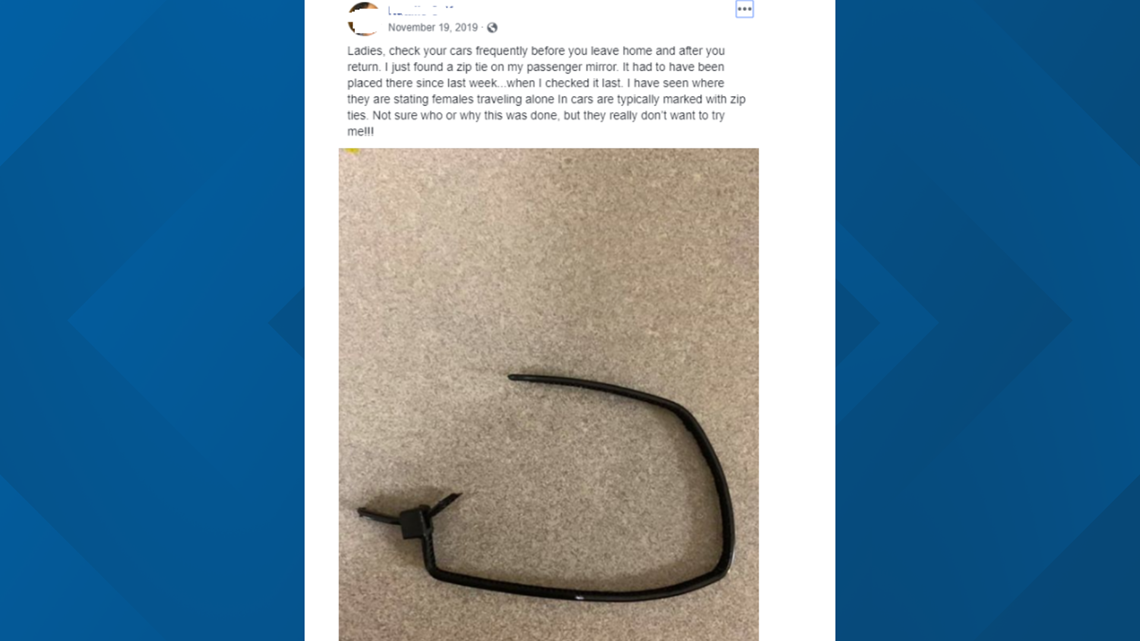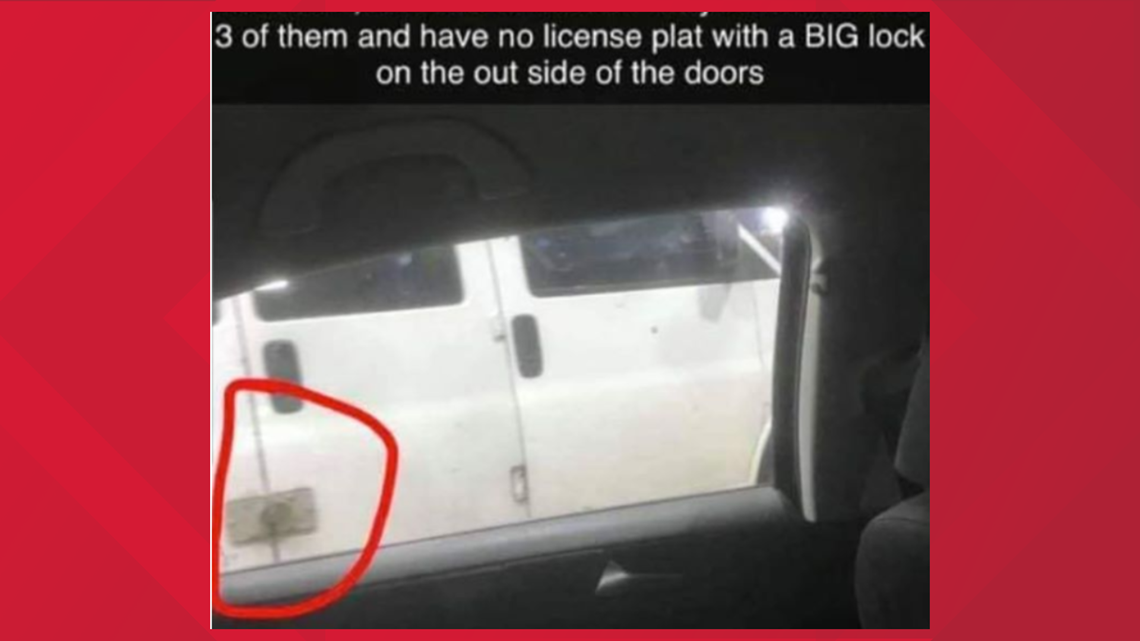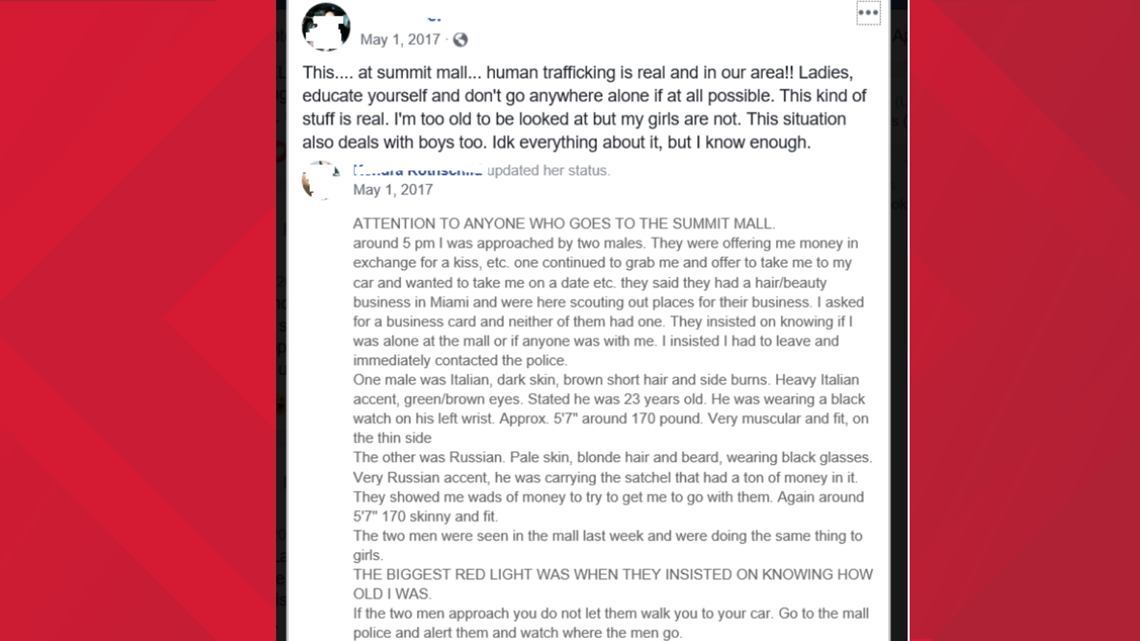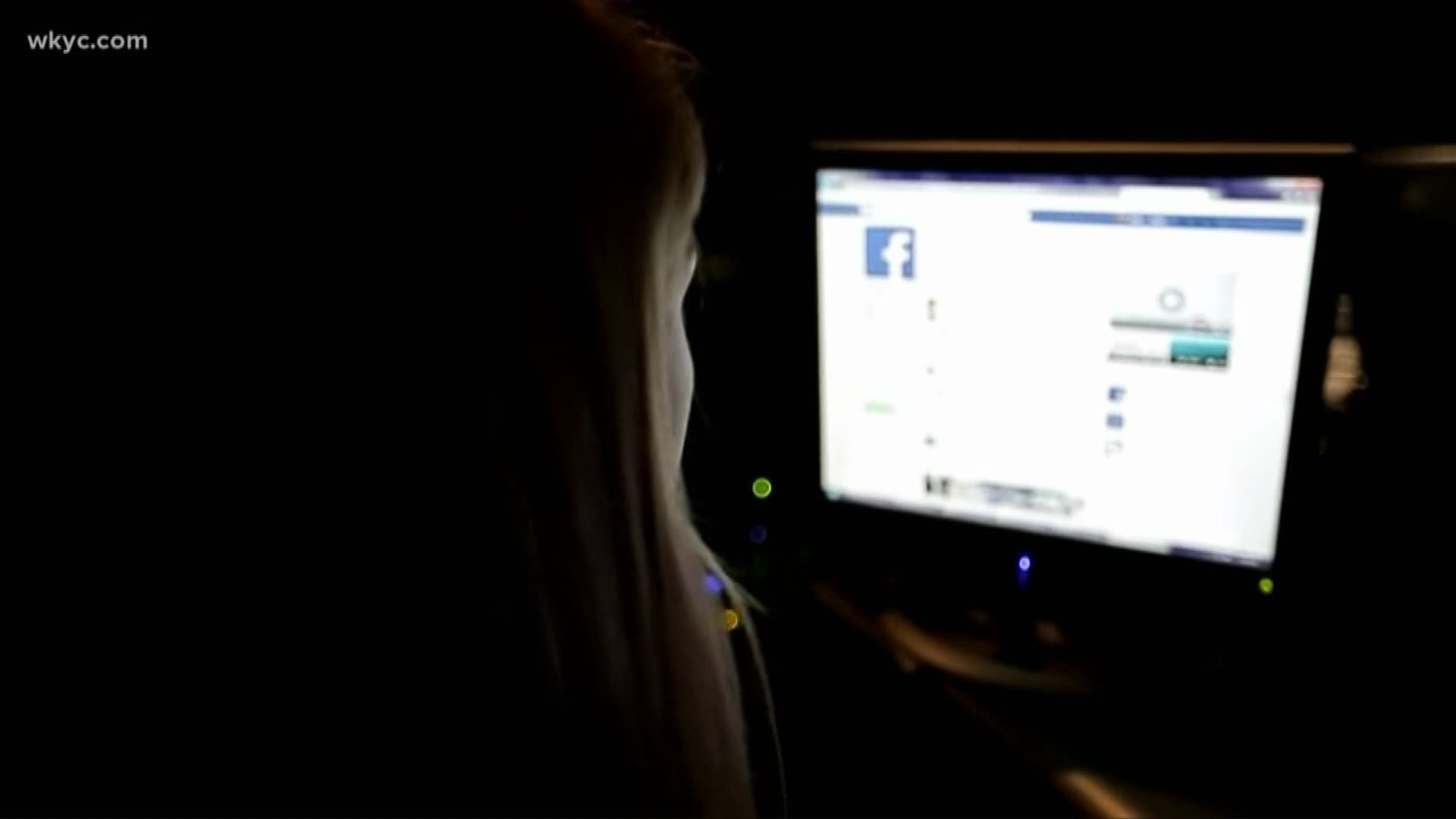We've all seen those horrifying social media posts about human traffickers trying to abduct women in malls or parking lots.
But are any of these claims true?
While human trafficking is real, 3News Investigator Rachel Polansky can verify that these claims are false.
THE CLAIMS
Are sex traffickers leaving zip ties on the cars, homes and mailboxes of potential targets of the crime?


Are white vans with locks on the outside being used for sex trafficking?


Is human trafficking happening at the Summit Mall?


THE ANSWERS
While human trafficking is real, 3News can verify that these claims are false.
Human trafficking affects millions of people, but it’s also the frequent subject of false social media posts.
One such story went viral in October 2018 and again in late July 2019 when social media users shared a meme stating that human traffickers were leaving zip ties on homes, mailboxes, and cars, of potential female victims to either mark them as targets or distract and abduct them for sex-trafficking purposes when the women try to remove the ties.
The hoax initially centered on San Angelo, Texas, in October 2018 but police there quickly debunked it.
3News Investigator Rachel Polansky asked Jim Mackey with the Cuyahoga County Regional Human Trafficking Task force about the three posts above.
"Are any of these posts legitimate?" asked Polansky.
"We haven't at the task force and our state partners, we have not heard of any actual cases stemming from incidents like those," said Mackey. "In fact, what's more prevalent is people know who their abductors are, as far as traffickers."
Mackey stresses that stranger abductions are rare, and trafficking is not typically happening in malls, parking lots, or how Hollywood portrays it.
So, if you are asking yourself -- what's the harm in sharing a false post?
"The biggest thing with misinformation is that than the general public doesn't know what to look out for," said Wendy Mark, with Collaborative To End Human Trafficking.
You might think you're helping to spread awareness -- instead, you're really just spreading misinformation.
And, if you do end up seeing a real sign of trafficking – you might not even recognize it.
"What we know about traffickers is that they're patient and they're willing to take time to groom an individual, find their vulnerabilities and exploit them," said Mark.
Real red flags of human trafficking may include:
- The person may not speak for themselves; they defer to a controlling individual.
- The person can appear submissive, afraid, or nervous, and avoids eye contact.
- The person shows signs of physical or mental abuse.
- The person has inconsistencies in their story or has a well-rehearsed story.
- The person suddenly has new, expensive clothing, jewelry, and other items.
- The person has a tattoo that could, in fact, be a traffickers branding.
- The person has multiple hotel card keys, credit cards, or cell phones.
- The person is not in possession of his/her U.S. or international identification documents.
OUR SOURCES
Have something you’d like VERIFIED? Click here to submit your story

